| Umělec magazine 2009/2 >> Graz as a platform for Art Graz as a platform for Art from Eastern and Southern Europe | List of all editions. | ||||||||||||
|
|||||||||||||
Graz as a platform for Art Graz as a platform for Art from Eastern and Southern EuropeUmělec magazine 2009/201.02.2009 Herwig G. Höller | cultural policy | en cs de |
|||||||||||||
|
The past doesn’t determine the blossoming of international cultural contacts: Nikola Tesla (1856-1943) in the tradition famous US inventors, broke off his technical studies in Graz because of nationalistic trash talk. The German nationalist-dominated student community was less than pleased with that talented Serb from Gospić. Hollywood director Otto Preminger (1906-1986) carried with him bad memories of his short time studying in Graz with Tesla until a very old age. He was brutally beaten because he, as a Jew, didn’t go to Catholic religion classes. Anti-Semitic tendencies in small towns left their culturally historic mark. Ferdinand Marian (1902-1946), the main actor in the film “Jud Süss” came in contact, according to Berlin media scholar Friedrich Knilli, with the nature of anti-Semitism, especially during his time at the Graz Acting School in the 1920s.
Cosmopolitan influences weren’t accepted in visual arts either. A small group of soft-modernists between the wars confronted a huge community of national socialist-sympathizing artists. Naturally, after the German annexation of Austria, NS-associated artists had their say. And the modernists had their problems as well: prominent figures lost their lives. Architect Herbert Eichholzer (1903-1943), collaborator with Le Corbusier, was executed due to political resistance. Painter Ida Maly (1894-1941) died in the NS Euthanasia program. Others such as painter Axl Leskoschek (1899-1976) fled into exile. In that era the cultural-political views of the city were fully aligned with those of the German Reich. Artists from Graz organized a large scale group exhibit in occupied Strasbourg. Dedicated NS art, especially exhibit pieces from local artists in the Munich House of German Art were excluded. During this time, “normal” cultural contacts with Southeast and Eastern Europe were a non-issue. If these parts of Europe did come up, they were artistically presented in a style that supported military politics of expansion. The students of the “State Higher School of German Artisanship,” the only art school in the city, busied themselves, among other things, with creating logos for the farms in the East that the Ritterkreuzträger (“Holder of the Knight’s Cross) would operate after the ultimate victory. Talented graphic designer Heinz Reichenfelser (1901-1969), professor at the State Higher School, member of the SS and key figure in Graz’s NS art movement, designed the telling poster stating: “You belong to us. Learn German.” The audience was the population of occupied Lower Styria in Slovenia, which was annexed in 1941. Cultural exchange, delegated by German rule, was meant especially to hold sway from Graz southward. The prevailing image was that of “Inner-Austria”—part of the Hapsburg Empire in the late 16th century, which included Styria, Kärnten, and parts of Slovenia as well as northern Italy. The dream in Hitler’s Germany, however, was that of a “New Europe” where a larger Germany dominated the continent. Even Slavicist Josef Matl (1897-1974), one of the few true Balkan experts in the city, was taken by this Nazi concept. Even if the idea of Styria dominating the South were not to come true, Graz saw itself as a “Bulwark against the Southeast.” A Goblin-Concept painting in line with the bulwark theme by Hans Stockbauer (1910-1982) and the aforementioned Heinz Reichenfelser has been hanging in Graz’s rathaus since the early 1940s. The picture, which was most likely painted over in the 1950s, was created before the violent annex of Lower Styria, and its original NS-given honorary title was “City of National Uprising.” The painting depicts a 16th Century Turkish siege. The Slavs had been the perceived threat in the 19th and 20th century, but now the focus has returned to the Muslims and Turks. “Graz has always been the last Western European bulwark against Turkey,” according to City Mayor Siegfried Nagl (ÖVP) in a statement against Turkey’s accession to the EU. The city developed into an internationally recognized cultural center with a lot of exchange with Southern Europe after World War II, despite its problematic history and enduring persuasiveness. The emergence of a younger generation of artists and writers has helped make this possible, but this is with the conditions of a Janus-faced schizophrenic cultural politics. The current government, the conservative Volkspartei, has culturally rubbed elbows with the reactionary Catholic Nationalists and even the former National Socialists. On the other hand, they have left the modern experiments of the liberal middle classes alone and have provided hefty subsidies. The saga has continued for decades between the Catholic national “Reaction” and the liberal modernists or those who ascribe to the “Bulwark Camp” and those open to artistic exchange with Southeastern Europe. Institutionally, the liberal self-proclaimed “Avant-garde” won decisive favor in the 1970s. At least until the late 1980’s, letters to the editor in the Kleine Zeitung (the most important local paper) often dealt with the concept of cultural Bolshevism. In the meantime, explicit anti-modern sentiments are being expressed once again in extreme Rightwing magazines. The multi-discipline Forum Stadpark was on the forefront of the modernist movement. A group of industrious young proponents of culture claimed a dilapidated coffee shop in the Stadtpark (City Park) in the late 1950’s. After the opening of the new location in 1960, works of local and Austrian art stood side by side works form by foreign artists. Included were exhibits from communistic Southeastern Europe and Eastern Europe: “Modern Yugoslavian Painting and Graphics” (April 1961), “Polish Graphics and Polish poster art” (April 1962), “Modern Themes in the realm of Slovenian culture” (May 1963). Artists from Ljubljana, Bratislava and other cities from the South/East exhibited their works in the Forum Stadpark in following years. The aforementioned Slovenian Modern Event clearly laid the ground for how the cultural exchange between Graz and Southeastern Europe should go forward, at least for the next three decades until the early 1990s: A focus on Yugoslavian culture and art would not include Hitler’s military history in the area. And the cultural interest in the Southeast is an integral component in the multifold Post War Modernist Project. Under the auspices of event in May of 1963, an exhibit by Slovenian artists such as Janez Bernik (1933-), Andrej Jemec (1934-) and Marko Šuštaršič (1927-1976) took place as well as lectures on urbanism, modern music, visual arts as well as literary readings and even a performance by the Ljubljana city puppet theatre. Both the Styrian and the Slovenian press wrote about the events favorably. Večer in Maribor wrote (8.5.1963) that a genuine dialogue had begun in Graz which could be very productive through continued ambitious efforts. At the same time, official cultural politics were showing an obvious interest in exchanges with the South, independent from the Stadtpark art organization. The first edition of the three-country biennial event called Trigon was initiated on short notice in late 1963, influenced by the experiences of Forum Stadtpark in 1961 and 1962. Conservative Hanns Koren (1906-1985), government cultural officer, referred to the three countries in Trigon (Austria, Italy and Yugoslavia) as a representation of “Inner-Austria” in his opening speech. The possibility of the historical concept didn’t seem to present a problem for the cultural politicians. “I said to him very early on: The Yugos don’t jump up and down when we talk about ‘Inner-Austria.’ That’s a perspective which can be historically Austrian or German National, but not Yugoslavian or Slovenian,” said Kurt Jungwirth (1929-), politician and successor to Koren as government cultural officer. Shortly thereafter, the cultural mission of Trigon was fulfilled. The theoretical bridge with Yugoslavia took physical form in 1969. Austrian president Franz Jonas (1899-1974) and Yugoslavian Head of State Josip Broz Tito (1892-1980) opened a bridge, which had been damaged in 1945, across the border in Styrian Bad Radkersburg. Despite Graz’s history, nationalistic critics of Trigon who disapproved of Yugoslavia’s equal participation, stayed out of the picture. The idea to exhibit features of the three constituents of The Western World (Romans, Slavs an Germans) found a supporter in FPÖ politician Alexander Götz (1928-), representative of the so-called “National Camp” (Kleine Zeitung, 16.9.1967). There was, however, massive resistance to the event’s modern abstract leanings even at Trigon’s outset in 1963. Still, other areas, such as theatre production in the 1970’s were even more heavily scrutinized. Wilfried Skreiner (1927-1994), an art historian, gave Trigon the professional push it needed to develop further. He began to oversee the New Gallery in Graz and also became responsible for Trigon in 1967. Skreiner introduced biennial themes and yearly “International Painter Weeks” (1966-1992), in which many artists from Southeastern Europe also participated. His personal and committed interest made him one of the most well-known curators in Yugoslavia. Skreiner’s Tri-Country Biennali, called “Avantgarde Festivals” of Styrian Autumn after 1969, followed a similar pattern. Cultural officials, who, like Skreiner oversaw art institutions in the different parts of Yugoslavia like the Moderna Galerija in Ljubljana or the Galerija suvremmene umjetnosti in Zagreb, acted as curators for the Yugoslavian projects. There was an effort to represent the Republics of Yugoslavia fairly. Slovenia and Croatia stood in the forefront, Serbia was well-represented and artists from Bosnia and Macedonia took part as well. Styria, which could see formally eye to eye with the Republics in Yugoslavia, was a sought-after partner for discussion and exhibits. Though the cultural exchange stood in the forefront, the exhibits lead to friendly relations which had little to do with art, especially in the 1980’s. This also played a role in Yugoslavia’s enthusiasm in taking part in the Trigon Biennali for decades. It’s possible to draw parallels between cultural politics in soviet Yugoslavia and conservative Catholic Styria. There was a dual strategy in both countries which the state with its authoritative tendencies simultaneously supported both folk customs as well as modern trends. In the same vein, you could easily compare the provocative interpretive dance performances by Marina Abramović (1946-) in the Belgrade Student Culture Center SKC with heavily disputed theatre performances by Graz playwright Wolfgang Bauer (1941-2005). In Graz, the meaning of Trigon was tightly bound to the role of Wilfried Skreiner. The final Trigon took place in 1991 due to the artists of separated Yugoslavia’s expansion into the realm of German and Czech art. The inveterate head of the New Gallery went into retirement in 1992. 1992 also brought large-scale retrospective homage to Skreiner’s Trigon Era under the name of “Identität: Differenz” by curator Peter Weibel (1944-). In a posthumously-published memoir, Skreiner warned to no avail: “This valuable cultural asset of regional cooperation should not be arbitrarily sacrificed to internationalism. The overarching regional aspect of this cooperation should be upheld, despite what is to some extent, very bitter political changes.” The efforts of Skreiner’s successor Werner Fenz (1994-) who headed the New Gallery from 1993 to 1997 and attempted to continue Trigon under different names failed was unsuccessful throughout the 1990’s. It’s a classical Austrian picture: Christian-swayed conservatives, which may have it’s nostalgic roots in the Kaiserlich-Koeniglich years of the Hapsburg Empire, traditionally showed markedly deeper interest in Southeast and Eastern Europe than the Austrian Social Democrats. The largest collection of art from this region has been organized by Erste Bank (First Bank)—and that’s no accident. Art may also have been an indicator for political changes, in that the spreading of Southeastern European art was considered part of modernism for Decades. The new face of art mirrored the political changes in the late 1980’s in the (still) communist countries. In Graz, the presentation of unofficial soviet art came relatively early—even earlier than in Vienna— due to the personal interest of singular activists. Peter Pakesch (1955-), then curator fothe Graz Art Collective, an out of the ordinary coup in 1987 with the invitation of the Moscow conceptualist Ilja Kabakov (1933-). Kabakov’s first trip to the West led directly to Graz, the site of his first installation in another country and the beginning of his international career. Exhibits of the Moscow Underground artists Konstantin Zvezdočetov (1958-) and German Vinogradov (1957-) followed in 1988. In 1989, curator Elisabeth Sarah Glückstein organized one of the largest exhibitions of unofficial soviet art across the Soviet Union called “Russian Mind.” The show would later be forgotten due to succession of scandals and questionable payments. Institution Cultural City Network Graz was also founded in 1989, which has organized basic art exchange programs in Southeastern Europe limited by budget constraints ever since. Shortly after the Fall of the Wall the Forum Stadtpark once again began to show signs of life. Artist Jörg Schlick (1951-2005) and the Review for Visual Arts rented an apartment in Prague in which Graz Exhibitions regularly took place. Sustainability was impossible because everything came from personal interests and enthusiasm. This is also what happened to the interest in Southeastern and Eastern European art in the middle of the 1990s in Graz, as well. On one hand it had to do with the small group of those Forum Stadtpark folks who weren’t only interested in Russian art. On the other hand, thoswe such as Margarethe Makovec (1971-) and Anton Lederer (1970-) who opened an Off-Art Space for local productions in the middle of the 1990’s out of their own personal interest in Southeastern European art. The artist collective Even if the first initiatives of the Forum Stadtpark of the early 1960s found their footing only in personal interest, by the end of the communist regimes in East and Southeastern Europe it was in the best interests of local state and cultural politics to hold cultural dialogue with neighbors. Although the 1990s brought renewed enthusiasm, only a limited number of art activities appeared on the regional scene. Graz no longer had the Southeastern European connotations, which it had even until the 1980s. It had lost its opportunity for intelligent upgrade between 1989 and 1991. Since then, the potential for new upstarts has declined. The culture industry has seen a marked commercialization in the last decades. This means that it’s more difficult for a mid-sized city like Graz with a somewhat narrow market for art to procure subsidies than neighboring capitals Vienna, Ljubljana and Zagreb.
01.02.2009
Recommended articles
|
|||||||||||||
|
04.02.2020 10:17
Letošní 50. ročník Art Basel přilákal celkem 93 000 návštěvníků a sběratelů z 80 zemí světa. 290 prémiových galerií představilo umělecká díla od počátku 20. století až po současnost. Hlavní sektor přehlídky, tradičně v prvním patře výstavního prostoru, představil 232 předních galerií z celého světa nabízející umění nejvyšší kvality. Veletrh ukázal vzestupný trend prodeje prostřednictvím galerií jak soukromým sbírkám, tak i institucím. Kromě hlavního veletrhu stály za návštěvu i ty přidružené: Volta, Liste a Photo Basel, k tomu doprovodné programy a výstavy v místních institucích, které kvalitou daleko přesahují hranice města tj. Kunsthalle Basel, Kunstmuseum, Tinguely muzeum nebo Fondation Beyeler.
|







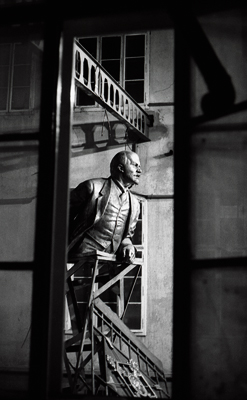












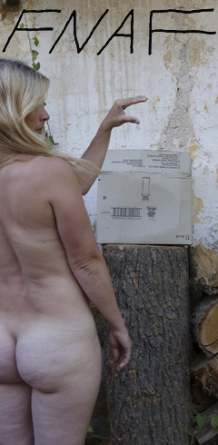











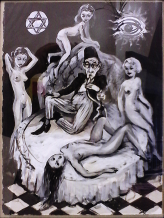
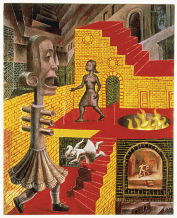

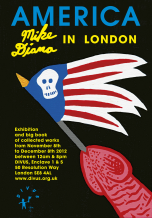


 New book by I.M.Jirous in English at our online bookshop.
New book by I.M.Jirous in English at our online bookshop.
Comments
There are currently no comments.Add new comment